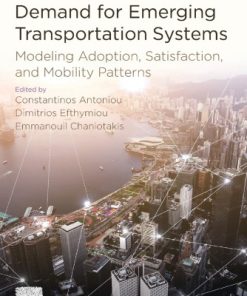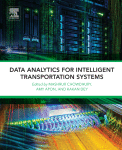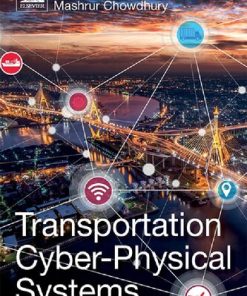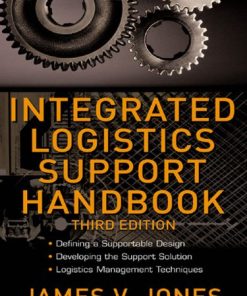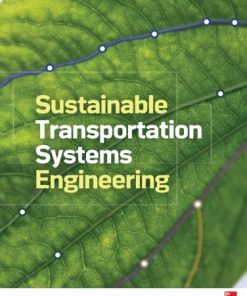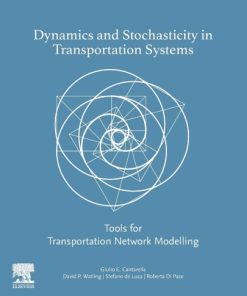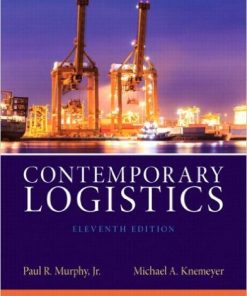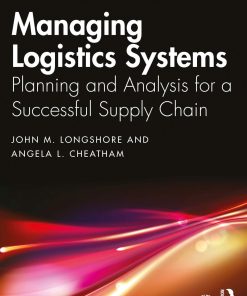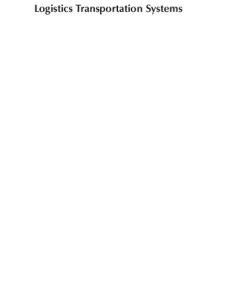(Ebook PDF) Logistics Transportation Systems 1st edition by Md Sarder 0128162872 9780128162873 full chapters
$50.00 Original price was: $50.00.$25.00Current price is: $25.00.
Logistics Transportation Systems 1st edition by Md Sarder – Ebook PDF Instant Download/DeliveryISBN: 0128162872, 9780128162873
Full download Logistics Transportation Systems 1st edition after payment
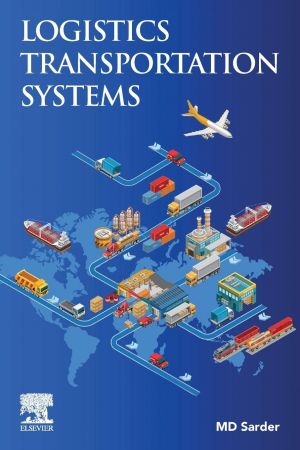
Product details:
ISBN-10 : 0128162872
ISBN-13 : 9780128162873
Author: Md Sarder
Logistics Transportation Systems compiles multiple topics on transportation logistics systems from both qualitative and quantitative perspectives, providing detailed examples of real-world logistics workflows. It explores the key concepts and problem-solving techniques required by researchers and logistics professionals to effectively manage the continued expansion of logistics transportation systems, which is expected to reach an estimated 25 billion tons in the United States alone by 2045. This book provides an ample understanding of logistics transportation systems, including basic concepts, in-depth modeling analysis, and network analysis for researchers and practitioners. In addition, it covers policy issues related to transportation logistics, such as security, rules and regulations, and emerging issues including reshoring. This book is an ideal guide for academic researchers and both undergraduate and graduate students in transportation modeling, supply chains, planning, and systems. It is also useful to transportation practitioners involved in planning, feasibility studies, consultation and policy for transportation systems, logistics, and infrastructure.
Logistics Transportation Systems 1st Table of contents:
Chapter 1. Overview of transportation logistics
Abstract
1.1 Introduction: what is transportation logistics?
1.2 The importance of transportation systems
1.3 The history of transportation systems
1.4 Transportation management
1.5 Logistics costs
1.6 Logistics/transportation cost implications
1.7 Transportation modes
1.8 Practical implications
1.9 Conclusion
1.10 Discussion questions
References
Chapter 2. Network and cost analysis of transportation system
Abstract
2.1 Introduction
2.2 Terminology
2.3 Transportation network
2.4 Classification of transportation network
2.5 Operational network structure
2.6 Hub advantages
2.7 Hub disadvantages
2.8 Performance criteria
2.9 Algorithms
2.10 Mathematical tools
2.11 Layers of network
2.12 Transportation cost
2.13 Network problems
2.14 Conclusion
References
Further reading
Chapter 3. Transportation infrastructure and equipment
Abstract
3.1 Transportation infrastructure
3.2 Transportation equipment
3.3 Truck/road infratructures
3.4 Rail infrastructures
3.5 Maritime infrastructures
3.6 Aviation infrastructures
3.7 Containerization
3.8 Significance of transportation infrastructure on economy
3.9 US transportation infrastructure plan
3.10 Conclusion
3.11 Discussion questions
References
Chapter 4. Transportation rules and regulations
Abstract
4.1 Introduction
4.2 Creating transportation laws
4.3 Federal transportation laws
4.4 Railroad industry regulations
4.5 Motor carrier regulation
4.6 Regulations in the airline industry
4.7 International water regulations
4.8 Importing procedures
4.9 Trade agreements
4.10 Hazardous materials regulations
4.11 Foreign trade zones
4.12 Freight forwarding
4.13 Incoterms
4.14 Conclusion
References
Further reading
Chapter 5. Intermodal transportation
Abstract
5.1 Introduction
5.2 Modality
5.3 Intermodal freight transportation
5.4 Components of intermodal transportation
5.5 Domestic transportation
5.6 International transportation
5.7 Selection criteria of mode of transportation
5.8 Last mile delivery
References
Further reading
Chapter 6. Logistics transportation problems with linear programming
Abstract
6.1 Overview
6.2 Introduction
6.3 Literature review
6.4 Solving transportation problems
6.5 Graphical method
6.6 Simplex method and the transportation tableau
6.7 Solver method
6.8 Sensitivity analysis
6.9 Conclusion
References
Chapter 7. Assignment and transshipment problems with linear programming
Abstract
7.1 Overview
7.2 Introduction
7.3 Literature review
7.4 Assignment problems
7.5 Transshipment problems
7.6 Sensitivity
7.7 Conclusion
References
Further reading
Chapter 8. Logistics customer services
Abstract
8.1 Introduction
8.2 Definition of customer service
8.3 Order cycle time
8.4 Importance of logistics customer service
8.5 Sales–service relationship
8.6 Sales–service relationship model
8.7 Costs versus service
8.8 Determining optimum service levels
8.9 Customer service variability
8.10 Service as a constraint
8.11 Measuring logistics service quality
8.12 Conclusion
References
Further reading
Chapter 9. Transportation rates and decision analysis
Abstract
9.1 Introduction
9.2 Rates for different modes of transportation
9.3 Importance of choosing the most cost-effective transportation system
9.4 Service choices
9.5 Factors affecting transportation rates and costs
9.6 Documentation
9.7 Approaches to negotiating transportation rates
9.8 Collect and analyze data: preparing an request for proposal
9.9 Building strong service provider relationships
9.10 Post negotiation support
9.11 Common misconceptions in rate negotiation
9.12 Analytical problems
9.13 Discussion questions
Review questions
9.14 Conclusion
Further reading
Chapter 10. Transportation routing
Abstract
10.1 Introduction to transportation routing
10.2 Choosing a route planning system
10.3 Vehicle routing
10.4 Vehicle routing and scheduling
10.5 Transportation routing analysis geographic information system
10.6 Freight consolidation
10.7 Hazardous material (HazMat) routing and risks
10.8 Advantages of choosing the right routing system
10.9 Analytical problems
Reference
Further reading
Chapter 11. Transportation security
Abstract
11.1 Introduction
11.2 Importance of transportation security
11.3 Cybersecurity in logistics transportation
11.4 Security risk assessment
11.5 Practical implications
11.6 Transportation security in the United States
11.7 Cost of security
11.8 Modal aspects of transportation security
11.9 Privately initiated transportation security
11.10 Conclusion
References
Further reading
Chapter 12. Reshoring and its impact on transportation and economy—a US perspective
Abstract
12.1 Introduction
12.2 What is reshoring?
12.3 Literature reviews
12.4 Developing reshorability index
12.5 Implementation of reshorability index
12.6 Evaluating economic impact of reshoring
12.7 Economic impact analysis
12.8 Analysis Summary
12.9 Conclusion and future research
References
Chapter 13. Automotive transportation logistics
Abstract
13.1 Introduction
13.2 Overview of automotive supply chain
13.3 Logistics functions and strategies
13.4 Significance of a supply chain and logistics in the automotive industry
13.5 Contributors of the automotive supply chain
13.6 Challenges in automotive transportation
13.7 How the automotive industry plans and manages their transportation
13.8 3PL: third-party logistics
13.9 Role of 3PL in the automotive supply chain
13.10 Conclusion
People also search for Logistics Transportation Systems 1st:
xan transportation & logistics systems reviews
xan transportation & logistics systems
xan transportation & logistics systems photos
smart transportation and logistics systems
inefficient logistics and transportation systems
Tags:
Logisticsm,Transportation,Systems,Md Sarder
You may also like…
Business & Economics
Computers - Organization and Data Processing
Data Analytics for Intelligent Transportation Systems 1st Edition
Business & Economics - Others
Uncategorized
Integrated Logistics Support Handbook (McGraw-Hill Logistics Series) – Ebook PDF Version
Uncategorized
Sustainable Transportation Systems Engineering: Evaluation & Implementation 1st Edition, (Ebook PDF)
Uncategorized
Business & Economics - Logistics
Jurisprudence & Law




